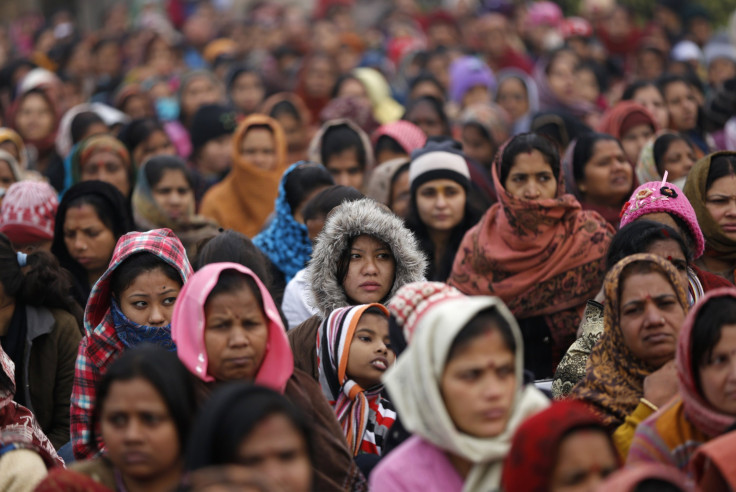After Delhi Gang-Rape, Most Indian Women Still Feel Safe At Work

After the gang rape and murder of a 23-year-old woman in Delhi last month sparked nationwide protests and attracted international attention, the daily harassment of women in India has become a topic of discussion. Part of it has been tied with the swift modernization of India’s economy over the past decade: This is a nation, many observers noted, that has gone quickly from a patriarchal, largely agricultural way of life to being thrust at the center of global commerce.
Western companies now employ hundreds of thousands of Indians of either sex, and with that push to globalize has come something fairly new in India: corporate rules against sexual harassment. American employers, and increasingly European companies, have had training programs in place for decades and offer avenues for redress to employees who feel they have been sexually harassed. That wasn’t common in India until a few years ago, but a 2002 incident began to change attitudes.
In what was probably the highest-profile sexual harassment case in India, Phaneesh Murthy, a senior executive at Infosys Technologies Ltd. (NYSE:INFY), resigned as a sexual lawsuit was filed against him and the company by a female co-worker. The following year, the company settled the case out of court with a $3 million payment.
That case brought to light the need for organizations to be intolerant of sexual harassment, and for an open culture where victims can report their concerns to management without any risk. A push to enact legislation to protect female employees led to the Sexual Harassment of Women at Workplace Act, enacted in September 2012.
“Promoting a social, physical and psychological environment that will advance awareness about and prevent acts of sexual harassment of women has gained strength in recent years,” a human resources manager at an information technology consulting company based in Bangalore said; she asked that her company not be identified.
Companies have started taking quid pro quo harassment seriously. Such harassment comes generally from a person in authority who offers career advancement or other benefits in exchange of sexual favors. “We have measures in place to make sure that women are not discriminated in any phase of the employment process,” said Maya Rathod, a human resources executive at a consulting company based in Mumbai. “ We undertake workshops and training programs at regular intervals,” she added. That sounds exactly like what an American HR professional would say in response to a similar question.
But some issues faced by female employees are unique to India, where private cars aren’t as common, and public transport is not as safe or reliable as it is in many Western countries. A horrific rape and murder in 2005 highlighted one of the problems Indian companies have: how to get their female employees to work, and then back home, safely.
In December 2005, Pratibha Murthy, a call-center employee in Bangalore, was raped and murdered by a cab driver who was taking her home from the office. That spurred a raft of measures by companies to ensure the safety and security of their female employees even outside of the workplace.
“There is a provision of transport facilities for women engaged in late shifts. A security guard escorts women on office transport. Also, we make sure women employees are in groups during night shifts. They should not be the first to be picked up from their homes and the last to be dropped home by the drivers,” Rathod said.
Not all women are convinced that is enough. Many of them have to get to and from work in the dark to match business hours in the United States, when it’s night in India.
“Hundreds of young women are working night shifts in many call centers in this city. I am sure that most of their parents and families will be concerned about how safe their daughters are. Are the companies doing enough to make us feel secure? I certainly have reservations about that,” said Achala Kumar, an employee at a business process outsourcing center, or BPO, in Bangalore.
One thing that will not change is the growing participation of women in the workforce, which is largely tied to the growth of the technology sector in India.
According to data by the National Association Of Software and Services Companies, women constitute 25 percent of the total number of science and engineering graduates in India (by comparison, female engineering graduates in the U.S. make up less than 20 percent). Women are already about 30 percent of the workforce in the Indian IT industry, and that percentage is expected to rise to 35 percent in 2013.
Those new opportunities have given many Indian women a newfound sense of freedom. And the culture they encounter at work is often encouraging: “An important reason for me loving my work is the wonderful colleagues I have, and many of them are men. I certainly feel a sense of security in their presence and that is why I spend quite some time with them even outside work,” said Mable Thomas, an IT consultant in Bangalore.
However, it’s outside of work where the biggest problem may be. The victim of last month’s crime in Delhi was a medical student, a young woman on her way to a place in India’s growing middle class, who was raped and murdered on a public bus. Any future employer of hers would likely have provided a work environment as free of sexual harassment as any in the West. But the threat, in her case as in many others, lay in wait outside.
© Copyright IBTimes 2024. All rights reserved.





















